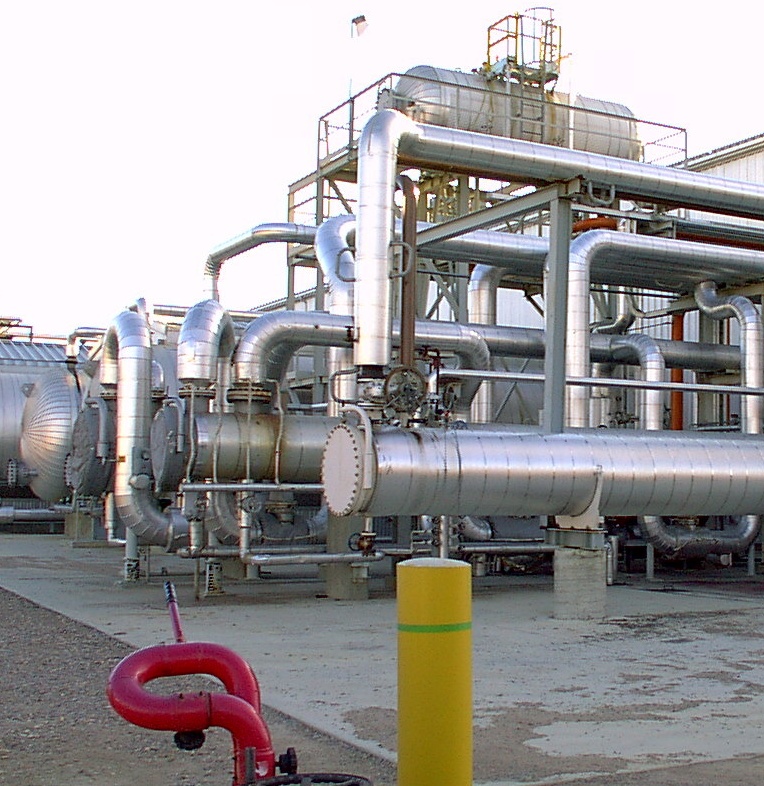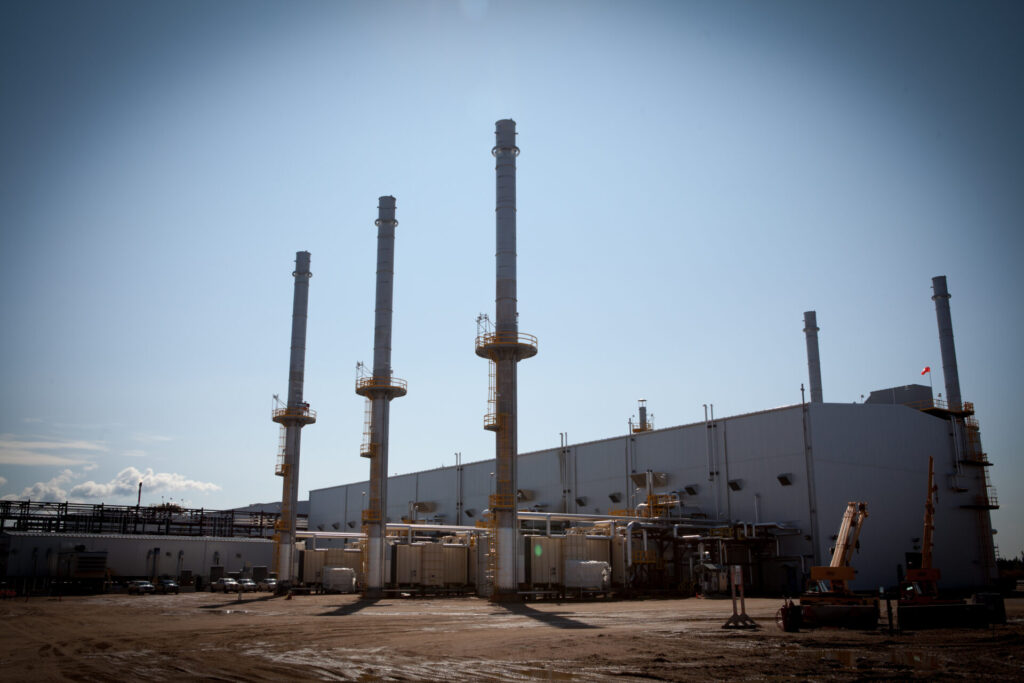Thermal In Situ
Canadian Natural holds some of the best thermal in situ oil sands assets in Canada, providing long life low decline assets with tremendous value and growth potential. Our thermal assets are located in two of the major oil sands deposits in western Canada, the Athabasca and the Cold Lake deposits. Canadian Natural’s oil sands deposits are in the form of bitumen, which in its natural state is too viscous to flow. When bitumen is too deep (>75 m) to economically mine, steam is injected to warm the bitumen, reducing viscosity and allowing it to be pumped through surface wells. Approximately 3.4% of Canada’s oil sands can be mined, the majority can be recovered using thermal in situ recovery.
Primrose & Wolf Lake
In the Cold Lake region, our Primrose operations currently produce bitumen from the Clearwater reservoir using the cyclic steam stimulation (CSS) process into facilities with approximately 140,000 bbl/d of production capacity. CSS uses a single well bore to inject and produce steam. This technology has been historically applied to reservoirs that have barriers to vertical flow. The production peaks and troughs at Primrose are a reflection of the cyclic steam process – the peaks are associated with production cycles from newer, less mature wells and the troughs are associated with production cycles from the more mature areas in the field.
Subsequent to several cycles of CSS production, the Clearwater reservoir is well structured for the steam flood follow-up process. Steam flood utilizes existing production wells as low pressure steam injection sites, with existing producing wells pumping heavy crude oil to the surface, similar to SAGD. The Company deploys this technology throughout its mature CSS wells at the Company’s Primrose operations.
The Company has a solvent assisted steam flood pilot in the Primrose steam flood area where it began solvent injection in late 2021 and continues to monitor and optimize solvent efficiency and commerciality.

Canadian Natural is a leader in the commercial application of horizontal well Cyclic Steam Stimulation (CSS) or “huff and puff” is a robust, proven technology adaptable to thinner inter-bedded reservoirs and requires only one well bore and the production consists of two distinct phases:
- Injection – Steam is injected for several weeks, mobilizing cold bitumen.
- Production – Flow is reversed, producing oil through the same well bore.
The two phases together comprise one cycle. Steam is re-injected to begin a new cycle when oil production rates fall below a critical threshold due to the cooling of the reservoir.
CSS requires lower capital investment and is the preferred production process in the Clearwater formation at Canadian Natural’s Wolf Lake and Primrose (north, south, and east) fields.
Kirby & Jackfish
Within the Athabasca deposits of the Kirby and Jackfish operations, our primary target is the McMurray reservoir and Steam Assisted Gravity Drainage (SAGD) is the recovery process of choice. SAGD uses two well bores, one for continuous steaming and the other for continuous production. The Company has 100% interest in these assets with current total facility capacity of 200,000 bbl/d, where economies of scale allow Canadian Natural to drive lower operating costs and top tier capital efficiencies.
Kirby
The Kirby project is located approximately 85 km northeast of Lac La Biche and is comprised of Kirby South and Kirby North central processing facilities with total productive capacity of approximately
80,000 bbl/d.
Canadian Natural commenced steam injection at the Kirby South Phase 1 project in September 2013, the first project the Company undertook in the Athabasca Oil Sands area. The project targets the McMurray reservoir and uses SAGD technology for the recovery of bitumen from the long life low decline in situ oil sands resources.
In late 2017, the Company reinitiated its 40,000 bbl/d Kirby North project for construction and drilling and achieved first oil in Q2/19.

Jackfish
In mid 2019, Canadian Natural acquired the Jackfish thermal in situ oil assets, adding to the Company’s long life low decline asset base. The Company’s teams worked together to leverage technology, operating and technical expertise to maximize synergies between the existing Kirby operations and acquired thermal oil sands asset. The Company’s Jackfish SAGD assets include 3 central processing facilities with a combined productive capacity of 120,000 bbl/d.
In 2022, the Company further consolidated the development opportunities of the Jackfish and Kirby assets with the purchase of the remaining 50% of the Pike assets. Pad developments at Pike will be tied into existing Jackfish and Kirby oil processing and steam facilities.
Canadian Natural is an industry leader, successfully implementing one of the first Steam Assisted Gravity Drainage (SAGD) programs in Canada at our Wolf Lake property. SAGD wells are drilled in pairs and use continuous steam injection to mobilize bitumen.

As the figure illustrates, steam is injected into the upper well mobilizing bitumen above it which then drains down to the lower production well due to gravity. The SAGD process allows for a high bitumen recovery factor, typically greater than 50%. SAGD operations require clean, continuous reservoirs and two wells. This process will be the preferred production process for the McMurray formation at Canadian Natural’s Athabasca area fields.
Future Developments
Beyond the Company’s mid-term growth targets, Canadian Natural has a large opportunity set within its high quality thermal in situ resource base for a multi-year thermal development program in a cost-effective and disciplined manner. Within the Athabasca region, the majority of our assets are in the planning stages, which include Grouse, Ipiatik, Gregoire and Leismer.